by Akshatha Rangarajan
Cambodia was the first Southeast Asian country to open its borders without restrictions, making it the favoured destination for a study trip for our class of 2022. Our travel was perfectly timed to a post-thesis period, giving a few of us a chance to pray for good grades for the entire class at the historic Wat Phnom pagoda, a symbol of Khmer identity. We were fortunate to have Reaksmey Yean (class of 2019) show us around and familiarise us with the Cambodian contemporary art scene over long, lingering dinners. However, our Programme Leader Jeffrey Say’s meticulously planned itinerary established the tone for a fantastic tour of Phnom Penh.
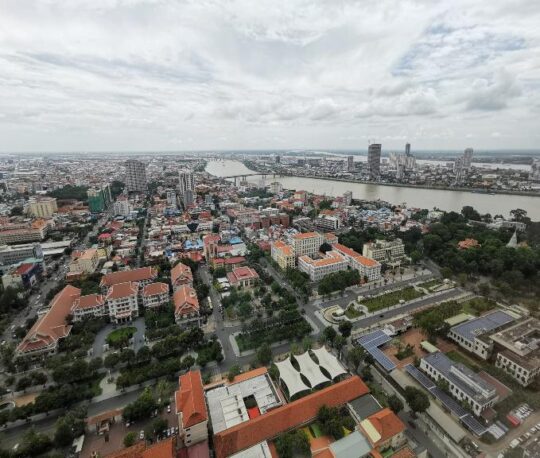
A view of the city from Rosewood Phnom Penh. Photo by Li Chi Kwan
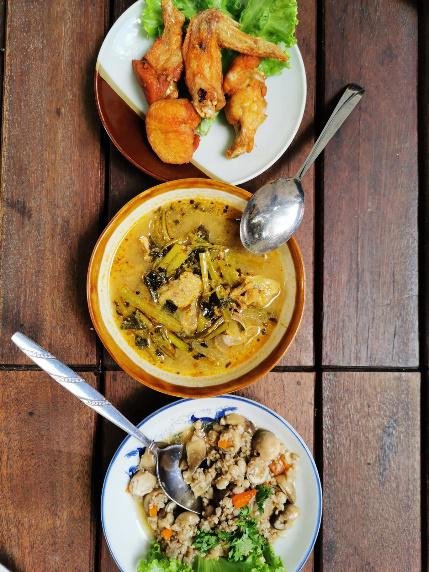
An authentic Khmer meal. Photo by Li Chi Kwan
We savoured all the different aspects of the trip; some of us found the artist’s studio visits memorable, others revelled in the intricacies of preserving archival documents, and one remains haunted by Tuol Sleng. The walls of Tuol Sleng have witnessed and speak of every horror imaginable. Nevertheless, its meditation room renders a compelling testimony to absolution. Incessant prayers ring through the room, enabling visitors to mourn inhumanity and condone violence. A monumental portrait of victims—a mother and child—whose eyes are indeed windows to their soul emboldens visitors to “never forget”. The exact powerful words Jeffrey left behind in the visitor’s log.
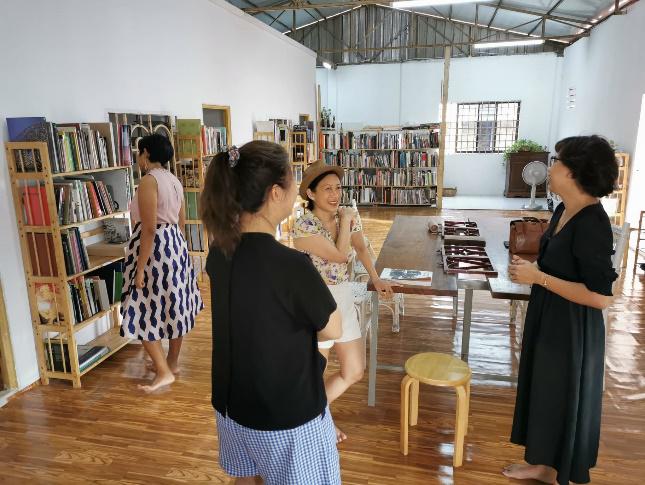
With Meta Meong at Dambaul. Photo by Li Chi Kwan
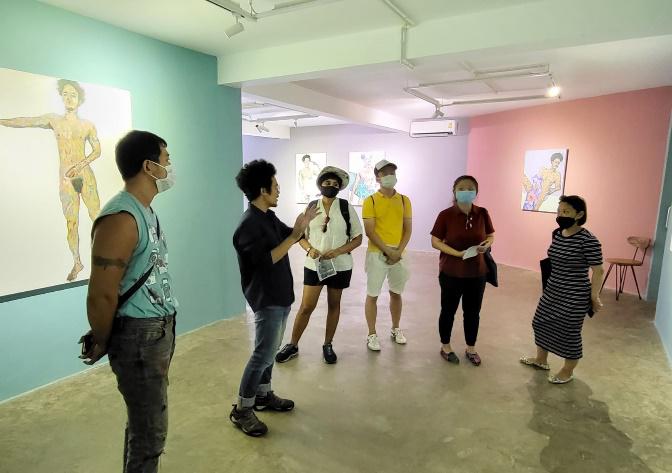
Reaksmey Yean and Heng Ravut discussing the My Self, My Body, My World exhibition. Photo by Jeffrey Say
We discovered that Cambodians are painstakingly piecing together their tumultuous history—realised by the resourceful and extensive archival database created manually at Bophana Audiovisual Resource Centre. There is also a tremendous thirst for knowledge, as substantiated by the number of art-based libraries and reading rooms containing a valuable cache of literature (Meta Meong’s Dambaul deserves to be specially mentioned). While an unprecedented downpour prevented us from greatly admiring the striking architecture and beautiful grounds of the National Museum, the contents and curatorship of the museum itself initiated an animated discussion. We also whimsically embarked on a night walk through deserted streets, allowing a stunning and uninterrupted view of the royal palace.
Though small, the art community in Cambodia is an exceedingly resilient eco-system maintained by an interconnected network of collaborations and shared resources. Upcoming artists like Pen Robbit, Heng Ravut and Prum Ero candidly and generously shared the crux of their visual practices. Heng Ravut’s exhibition (curated by Reaksmey at YK Art House) juxtaposed the artworks against gallery walls painted in different colours making for an impressive display. Curators and coordinators like Java Creative Café’s Dana Langlois, Sa Sa Art Project’s Kourn Lyna and Pi-Pet-Pi’s Liz Heeley were very forthcoming about the Cambodian art community and gave us nuanced impressions about the realities it faces.
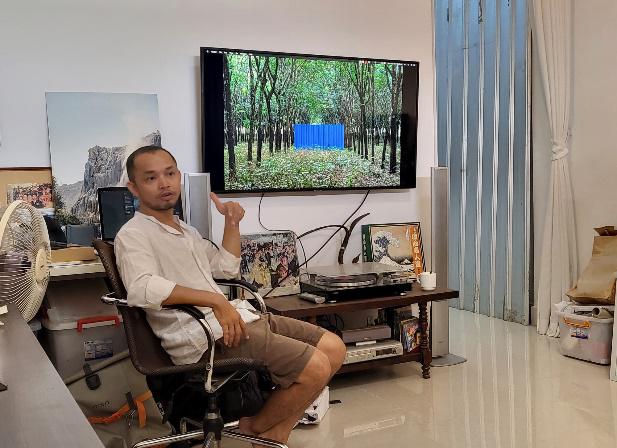
Lim Sokchanlina explaining one of his artworks. Photo by Li Chi Kwan
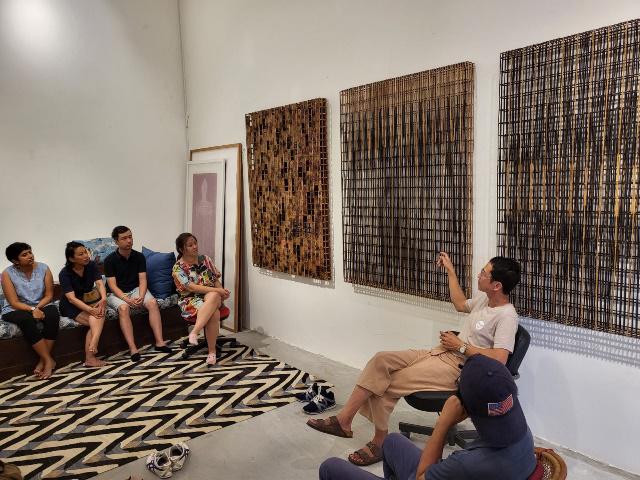
Having a dialogue with Sopheap Pich about his artistic practice. Photo by Jeffrey Say
The visit to Leang Seckon’s, Sopheap Pich’s and Lim Sokchanlina’s studios was the focal point of our comprehension of Cambodian contemporary art. Examining their artwork up close and noticing minute details absent in photo documentation of publications was riveting. All three artists elaborated on the relevance and limitations of materiality, making for stimulating dialogue since their works are so varied and distinct. We were privy to intimate anecdotal accounts about their creative process and the rationale and theories driving their art. Leang Seckon honoured us with an invitation to his wonderfully eclectic house, tastefully adorned with vintage paraphernalia and embellishments that furthered the conversation contextualising his art. We were enormously privileged to scrutinise and deliberate Pich’s ongoing artworks, which were (in May 2022, as yet) unseen by the public. The new series only reaffirms Pich’s allure towards reinterpreting material, explicating the form and structure through an elaborate and extensive artistic process. Furthermore, Sokchanlina coveted our assessment of his art’s conceptual development as he sought to revisit prior work. He also enthralled us with his thoughtful gesture of exclusively gifting souvenirs from his Cambodian Migrant Workers in Asia—A Conversation series.
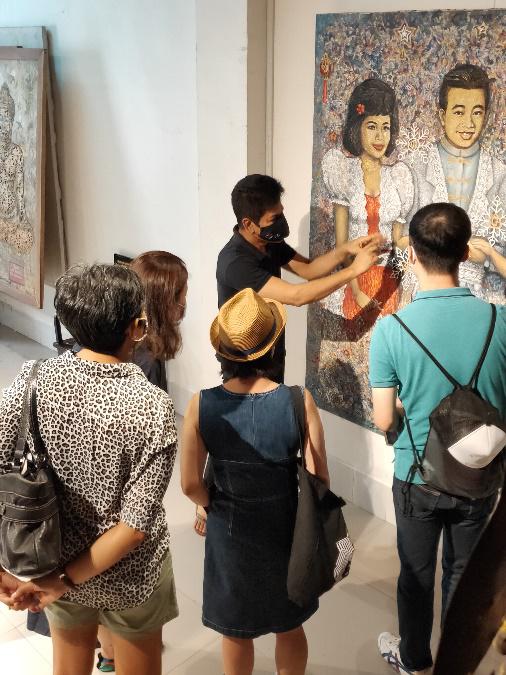
Leang Seckon analysing his artwork. Photo by Reakmey Yean
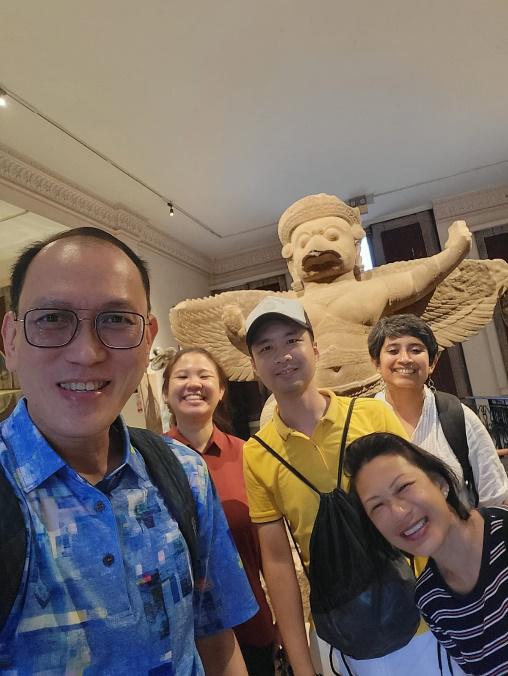
At the National Museum entrance. Photo by Jeffrey Say
Our eagerness to learn more about Cambodian art was met with genuine interest as Cambodians are very hospitable people and had no qualms sharing their thoughts and homes with us. We were always warmly received and even trivial questions were never left unanswered. Nevertheless, this trip also remains significant because we grew closer as classmates, making our friendship more profound and meaningful. We fearlessly shared our plans, found each other’s quirks endearing and even confessed late-night noodle cravings. The five-day study trip was busy and unsparing, strenuous and long, but we can truthfully claim it perfect.

